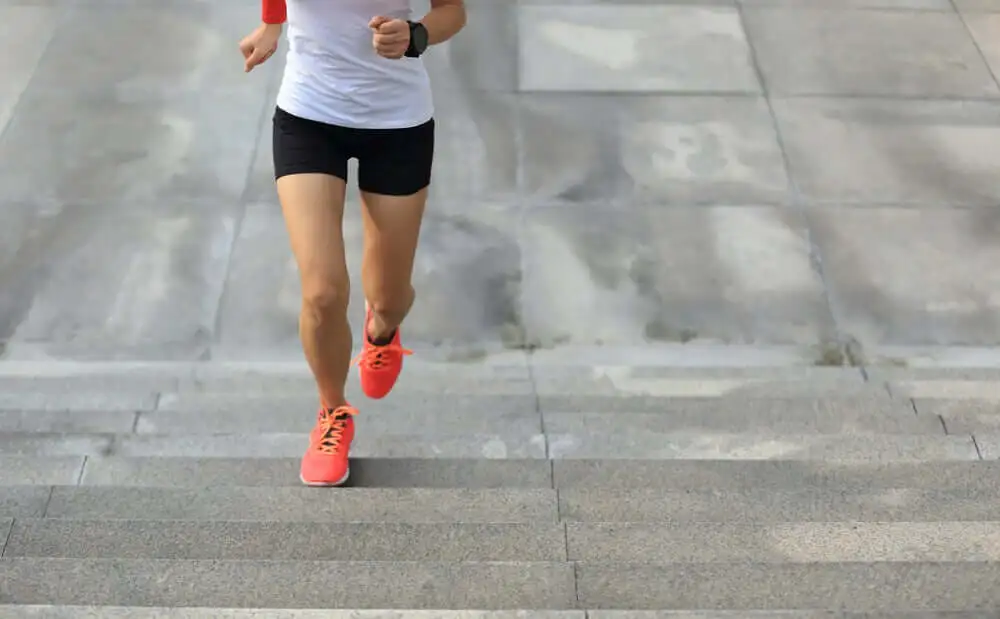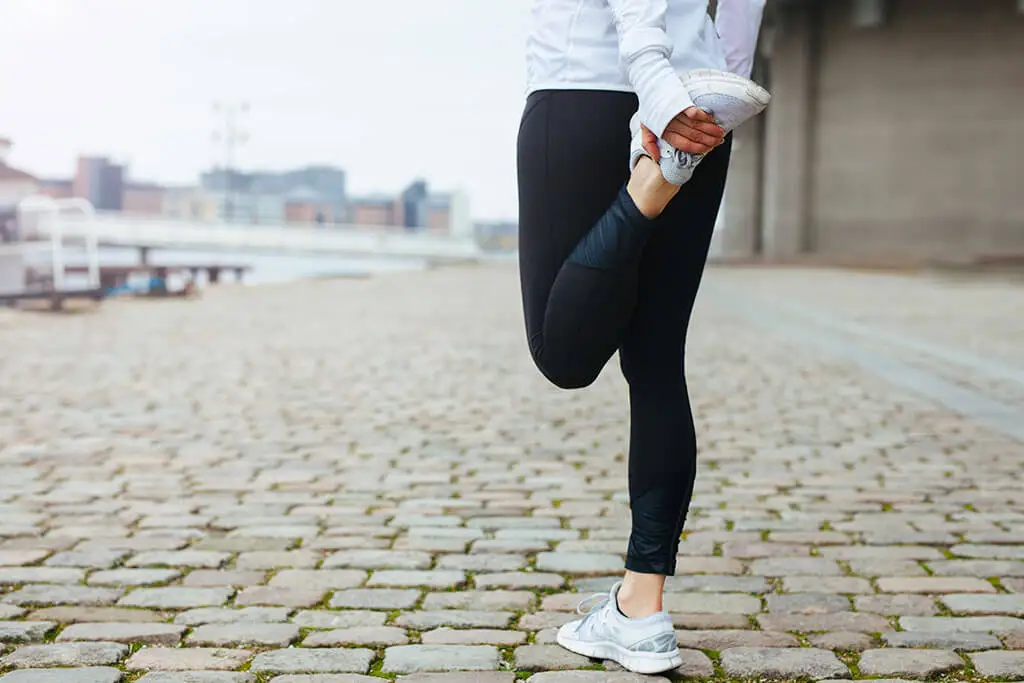The Benefits of Walking and Jogging Backwards


Reviewed and approved by the doctor Diego Pereira
Walking and running backward, also known as reverse walking, backward running, or reverse running, is an increasingly popular training method. It consists of changing the orientation of your walk or run in order to prevent monotony and promote the activation of other muscle groups. Today, we’ll show you the benefits of walking and jogging backwards to encourage you to try it.
Contrary to popular belief, this type of practice does not pose much danger to the runner. The risk of falling is low and, once you get used to it, you learn what to do in case you lose your blance. If you’re looking for a different way to practice running, then look no further than the backwards method!
Why try backward running?
The first reason runners try backward running is to vary the style of their training. Monotony can make you lose interest in any sport, so you may want to include variations to motivate you to learn new techniques.
But that’s not all. As you’ll see below, there are multiple benefits of walking and jogging backward. We’ve divided them into two: physical and mental. Overall, moving backward gives you better balance, and coordination, reduces injuries, and activates new muscles in your lower trunk.
You don’t need to do very long runs to get the benefits. You can even try what is known as mixed running. You can practice it on a running track, on a treadmill, or in open spaces. The possibilities are endless.
We think you may be interested in reading this, too: How to Get Jack Grealish Calves? The 5 Best Exercises to Achieve It
The physical benefits
As you would expect, the level of difficulty of running and walking backwards is greater than walking forwards. Although the walking speed and intensity are lower, the benefits are equal or even superior to those of conventional walking. Let’s take a look at its main physical benefits.
It can help you improve your strength and power

An article published in The Journal of Strength and Conditioning Research in 2020 compared strength, speed, and power values in athletes training forwards and backwards. After 8 weeks, the results suggest that the backward gait variant is very useful for improving concentric power and strength.
Like this article? You may also like to read: Discover the Importance of Keeping a Day Off Your Exercise Routine
It increases metabolic cost
This is indicated by a study published in the European Journal of Applied Physiology in 2020. Metabolic cost is the amount of energy demanded by the body when doing an activity.
The results of the study suggest that running and walking backwards demand more energy than walking forwards. The energy expenditure can be up to 35% higher, especially on steeper slopes.
It reduces running injuries
Research published in Sports Medicine in 2018 points to the fact that runners who include backward walking sessions have lower risks of injury.
But that’s not all, it also indicates that it can be used as rehabilitation therapy after sports trauma to the lower trunk. Undoubtedly, this is one of the benefits of walking and jogging backwards that athletes should not ignore.
It reduces impact on your knees
Along the same lines as above, backwards running has been shown to reduce compression of the patellofemoral joint. This is one of the main catalysts for patellofemoral injury – something quite common in athletes.
It improves your cardiorespiratory function
At the same time, and although it may not seem so, the benefits of walking and jogging backwards are also perceived at the cardiorespiratory level. This is indicated by a study published in the International Journar of Sports Medicine in 2005. It’s also useful for improving body composition.
These are the main physical benefits of running backwards. Of course, you also get muscular improvements. For example, running uphill activates gluteal and biceps femoris muscles that don’t play a major role in conventional running.
The mental benefits
Apart from the physical benefits, there are also other reasons to include backward running in your workouts. The benefits you receive on a mental level are as follows:
- It improves your balance and coordination.
- Running backwards helps regulate your spatial sense.
- It prepares you to anticipate the unexpected.
- It takes you out of your comfort zone.
- Running backwards sharpens all your senses, from touch to hearing.
- It gives you greater awareness of your body mass.
- It improves your overall mood.
- Running backwards helps you discover other skills and abilities.
The more you train under this modality, the greater the benefits in this sense. Of course, the first steps are the most difficult, so these will not be as evident in the first few weeks. To help you master it, here are some tips for beginners.
What to keep in mind to start practicing it?

Although we mentioned at the beginning that the risk of falling is not so great, this is true to the extent that you’re alert throughout the training. Also, as long as your training is progressive and you avoid exceeding the walking speed when you are not yet experienced enough. Follow these tips when practicing:
- Try it on a treadmill first: This is the best way to start, partly because you don’t get any obstacles in the way. Try walking before running and use the side rails if walking in the opposite direction destabilizes your sense of balance.
- Go slow: This is the most important trick for beginners to follow. You can’t pretend to run like an athlete who has been doing this for years. You must learn technique, balance, and sensory skills before you want to increase your running speed.
- Plan short distances: When you start outdoors, run short distances. You can start with 10-20 meters, which you will alternate with a forward march. Choose terrain with as few obstacles in the way as possible.
- Avoid downhills: Downhills are the most difficult challenge for a backward runner, even for professionals. The risk of falling is very high, especially if you don’t know the technique. It’s better to stay on flat terrain or, better yet, with a certain degree of slope inclination.
Keeping your back straight, adjusting your head rotation to avoid neck strain, stretching before and after each workout, paying attention to your hand movements, and planning how to land in case of a fall are also part of your preparation.
Landing when falling isn’t difficult, although this is something you should practice. You can use your hands and buttocks to avoid hitting your back and head and, considering that the gait is slow, you shouldn’t have any major problems. Practice makes perfect, so the more you train the more proficient you will become at this beneficial running variation!
All cited sources were thoroughly reviewed by our team to ensure their quality, reliability, currency, and validity. The bibliography of this article was considered reliable and of academic or scientific accuracy.
- Rasica L, Porcelli S, Minetti AE, Pavei G. Biomechanical and metabolic aspects of backward (and forward) running on uphill gradients: another clue towards an almost inelastic rebound. Eur J Appl Physiol. 2020 Nov;120(11):2507-2515.
- Roos PE, Barton N, van Deursen RW. Patellofemoral joint compression forces in backward and forward running. J Biomech. 2012 Jun 1;45(9):1656-60.
- Terblanche E, Page C, Kroff J, Venter RE. The effect of backward locomotion training on the body composition and cardiorespiratory fitness of young women. Int J Sports Med. 2005 Apr;26(3):214-9.
- Uthoff A, Oliver J, Cronin J, Harrison C, Winwood P. A New Direction to Athletic Performance: Understanding the Acute and Longitudinal Responses to Backward Running. Sports Med. 2018 May;48(5):1083-1096.
- Uthoff A, Oliver J, Cronin J, Harrison C, Winwood P. Sprint-Specific Training in Youth: Backward Running vs. Forward Running Training on Speed and Power Measures in Adolescent Male Athletes. J Strength Cond Res. 2020 Apr;34(4):1113-1122.
This text is provided for informational purposes only and does not replace consultation with a professional. If in doubt, consult your specialist.








